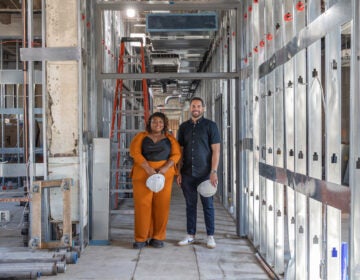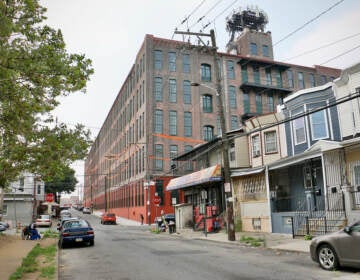Pinning future for New Kensington on Orinoka Mills reuse
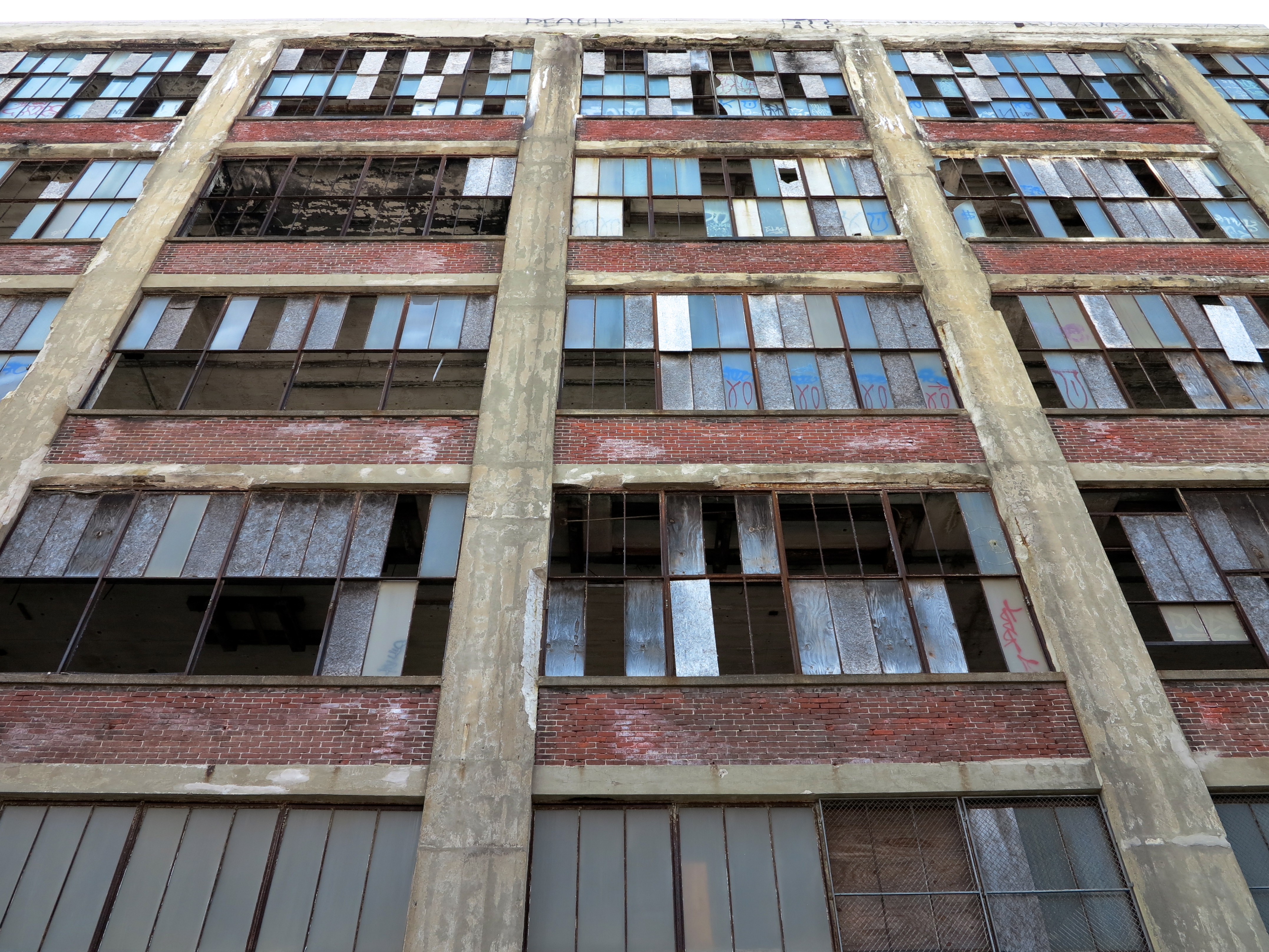
The story of Orinoka Mills is tangled in the many tired, typical Philly tropes about disinvestment, deindustrialization and decrepitude.
Once known for producing fine textiles, Orinoka Mills’ more recent history is one of vacancy, tax-delinquency, and property violations. It’s been used as a shooting gallery serving the nearby open air drug market at Kensington and Somerset, under the El. In June L&I cited the property as imminently dangerous for a partially collapsed fifth floor wall. The problems are all too familiar, but unlike other similar sites there is an alternative on the horizon.
Instead of being a monument to all that Kensington is not, New Kensington Community Development Corporation envisions Orinoka Mills rehabbed, a symbol of what this neighborhood could be.
New Kensington CDC (NKCDC) is making plans to transform the 1920s mill into Orinoka Civic House. It will have 51 one- and two-bedroom loft-like units, reserved for those earning 20%-60% of the Area Median Income. On the first floor, at the corner of Ruth and Somerset, will be an airy community space and hopefully a coffee shop. It will be glassy and inviting – two words that don’t describe anything about Orinoka Mills now.
By redeveloping Orinoka Mills, NKCDC is betting big that a transformative investment will anchor neighborhood improvement. By providing a safe and welcoming place for neighbors to gather, offering community-oriented programs and quality affordable housing, Orinoka Civic House is intended as a highly visible sign that a better future for the neighborhood is possible. NKCDC wants to replace dope and seemingly boundless need, by dealing in measured doses of hope.
As PlanPhilly reported last week the Orinoka Mills redevelopment is the centerpiece of a resident-driven plan developed by Interface Studios to improve the area bounded by Lehigh and Aramingo, Clearfield to Kensington. The plan offers a framework to make the area safer, cleaner, greener, healthier, and more stable. It will help guide NKCDC as it transitions its focus area above Lehigh Avenue, its traditional northern boundary.
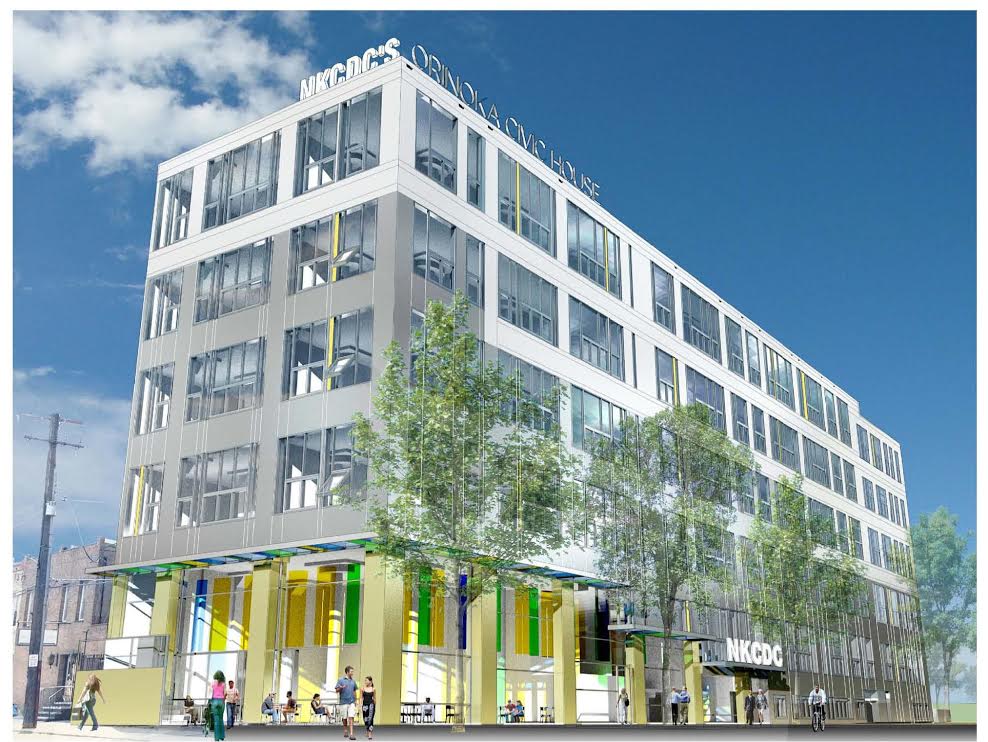
On a typical day, community development work is about stubborn optimism and celebrating incremental victories – trees planted, lots cleared, responses to 311 calls, a vacant storefront filled. Other days, it’s about big vision in the form of splashy transformative investments like Orinoka Civic House. So while NKCDC and neighbors are dreaming about what Orinoka can be, they’re also laying the groundwork for building a more engaged and empowered neighborhood.
To support this work NKCDC will relocate its offices from Frankford Avenue near Cumberland Street to the lower level of the rehabbed Orinoka building. Instead of being content to help manage the relative successes of Fishtown, East Kensington and Port Richmond, NKCDC is moving where its efforts can have greater impact.
“That’s a huge literal and symbolic move,” said Andrew Goodman*, NKCDC’s new Community Engagement Director. Rather than simply expand, NKCDC is “actually providing resources and moving in as neighbors.”
The move is just three blocks north of NKCDC’s current office. But thanks to the Lehigh Viaduct, an imposing elevated railway, “it feels like its another world,” said NKCDC’s longtime executive director Sandy Salzman, whose family has lived in Fishtown for generations. “Our goal is to combine these worlds and make it like it was back in the day when going under the viaduct didn’t mean going someplace scary, either north or south.”
The move will be the most visible signal yet of NKCDC’s shift north. Fishtown, Port Richmond and East Kensington, where NKCDC has worked for 29 years, have seen extraordinary change. NKCDC estimates that vacant property, which it helped stabilize for 20 years, has been reduced by about 75%. A stroll down Frankford Avenue proves that the private market no longer needs convincing to invest in commercial corridors. Residents have voice through several civic associations. NKCDC will retain a presence in its original neighborhoods working on issues of sustainability, affordable housing, transportation, and economic opportunity.
As part of a strategic plan developed seven years ago NKCDC’s board decided to expand its service area northward where there was little civic infrastructure despite serious needs. They developed an early focus on the blocks surrounding the Somerset stop.
“We always recognized this was the area we needed to focus on because it was the area that had the most problems. Somerset was the number one drug corner of Philadelphia if not the east coast,” Salzman said.
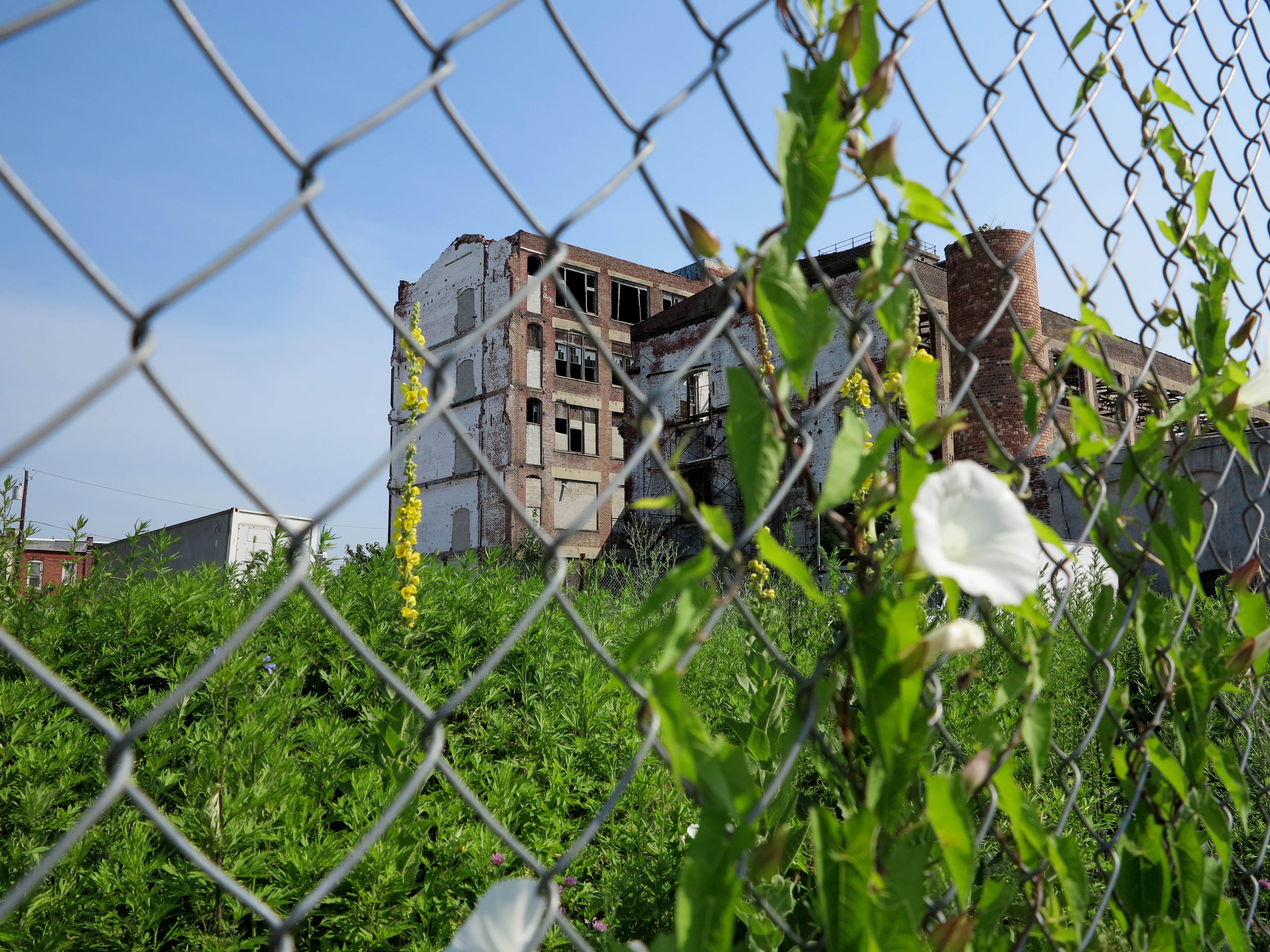
The transformative possibility of Orinoka Mills, mere steps from the Somerset stop, has tantalized NKCDC for years. But it has taken years for necessary legal proceedings between the city and the delinquent former owner to run their course. (In late 2013 the city acquired Orinoka Mills at sheriff sale on behalf of NKCDC. In June City Council passed legislation authorizing the Philadelphia Redevelopment Authority to transfer the property, which is pending.) Meanwhile NKCDC was able to engage in deeper community conversations and build trust with neighbors.
Community planning processes for the area surrounding Orinoka Mills, first with a Community Design Collaborative team and more recently with Interface Studios, invited residents into thinking about a new future for the neighborhood. Plus, NKCDC has helped support the creation of a new civic association, Somerset Neighbors for Better Living, to empower residents to work together.
Salzman said that residents were initially skeptical of NKCDC, but they were also “really hopeful because they had seen what we had done down here. They decided to give us a chance,” Salzman said. “They wanted things to look better. They wanted their neighborhood to be safer. They wanted their neighborhood to be cleaner.”
All of that planning “started to get people thinking that there was possibly a different reality for the community,” said Shanta Schachter, deputy director of NKCDC.
Above all else, that alternative reality must be a safer one. Without addressing crime, it became clear that no other improvements would take hold. Salzman explained:
“You don’t live in a neighborhood that’s the drug capital of the world and not feel intimidated. Most nights these people would come home and they would stay in their house. Kids were not allowed to play in the street. They hid behind closed doors. The area we call the village – which is Jasper Street, Helen Street off of Somerset that goes down to the viaduct – it had a constant parade of people buying drugs at Somerset Street and going to the viaduct to shoot up. So that was the first thing that we knew we needed to tackle to get people to feel more comfortable.”
A section of the Lehigh Viaduct was fenced off last year, which has diminished that persistent parade of people down residential blocks, though more fencing is needed. Another key has been slowly convincing neighbors, who didn’t necessarily trust the police, to engage with law enforcement as community partners.
These days there is frequent police presence, especially from SEPTA police, near the El stops. People are becoming less afraid to call the cops and they’re starting to see some results. Now, Salzman notes, it’s increasingly common to see folks actually sitting out in the evenings.
“The fence plus the vacant lot stabilizations elsewhere in the neighborhood represent some of those first tangible moves where NKCDC is working with the civic association to make those improvements in key problem areas that address residents’ needs around public safety issues, blight, and illegal dumping,” explained Goodman.
They’re currently working to stabilize 85 vacant parcels by cleaning and greening. That’s a fraction of the 622 vacant properties – which Interface estimated could accommodate to 30 football fields – in the North of Lehigh plan area, but it’s an important start. Soon they hope to work on code enforcement issues, as well as some creative responses to vacancy, and some expressions of positive neighborhood identity.
The whole formula isn’t so different from what NKCDC worked on in Fishtown, Port Richmond, and East Kensington: stabilize vacant land, empower neighbors to get involved, create affordable housing, transform a former industrial building into a new hub of life. NKCDC just has the benefit of having been through this sort of rebuilding cycle before.
All of this work, Salzman said, has a similar message: “This area is going to be a safe, stable place to live.”
It’s important to remember that this work is less about NKCDC than it is about the neighborhoods where it works. The North of Lehigh Plan is meant to address the community’s concerns, and stems from their hopes and desires. As they often say, NKCDC’s goal is to put itself out of business.
The hope is for Orinoka Civic House to be such a stabilizing influence that it helps spark other changes that improve quality of life. Its conversion alone won’t reinvent the neighborhood, but what other changes may sweep in when Orinoka Civic House opens its doors? That’s the question that will keep neighbors and NKCDC working for years to come.
“We see a lot of capital investment in building projects that are just simply that. They’re not necessarily successful. They don’t necessarily have the impact that’s intended because there aren’t the supports surrounding that. There aren’t the programs, there’s not the positive activity,” said Schachter. “That’s something we’re trying to be very intentional about. This isn’t just a $16 million investment. This is an investment in the community. We won’t just build and walk away.”
*Disclaimer: Andrew Goodman is a former colleague of the author’s. Until recently Goodman worked at PennPraxis. PlanPhilly is a PennPraxis project.
WHYY is your source for fact-based, in-depth journalism and information. As a nonprofit organization, we rely on financial support from readers like you. Please give today.





